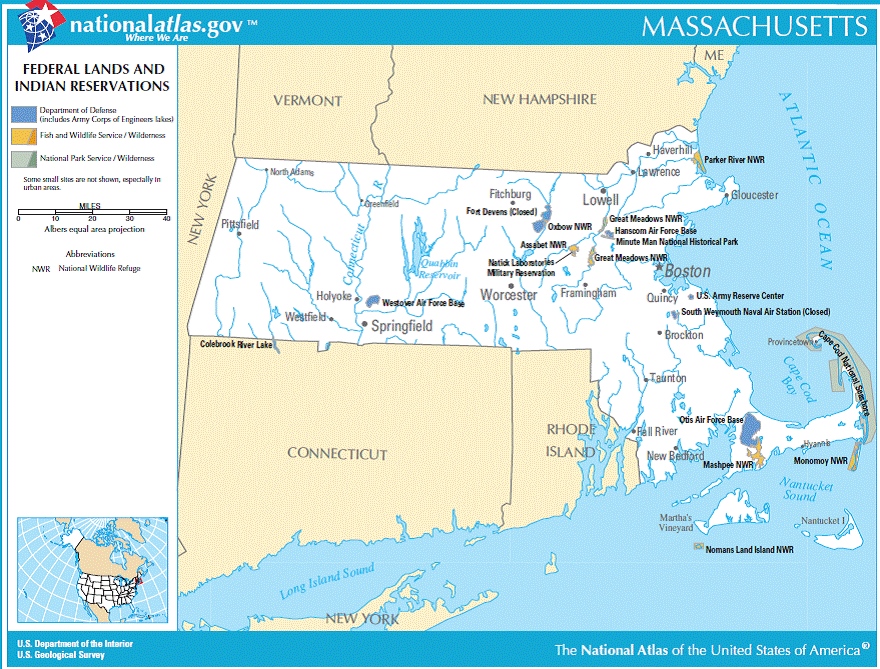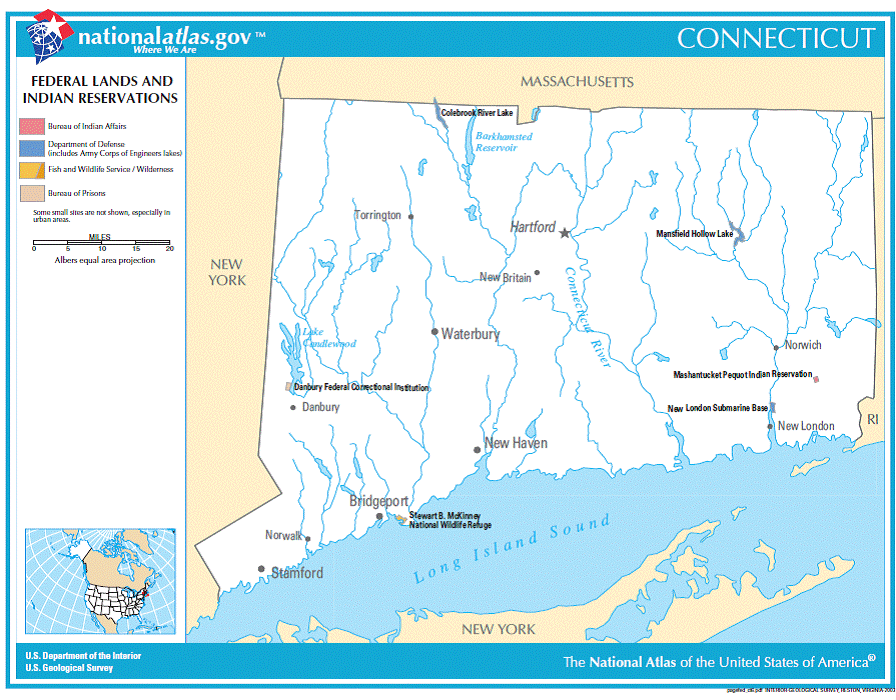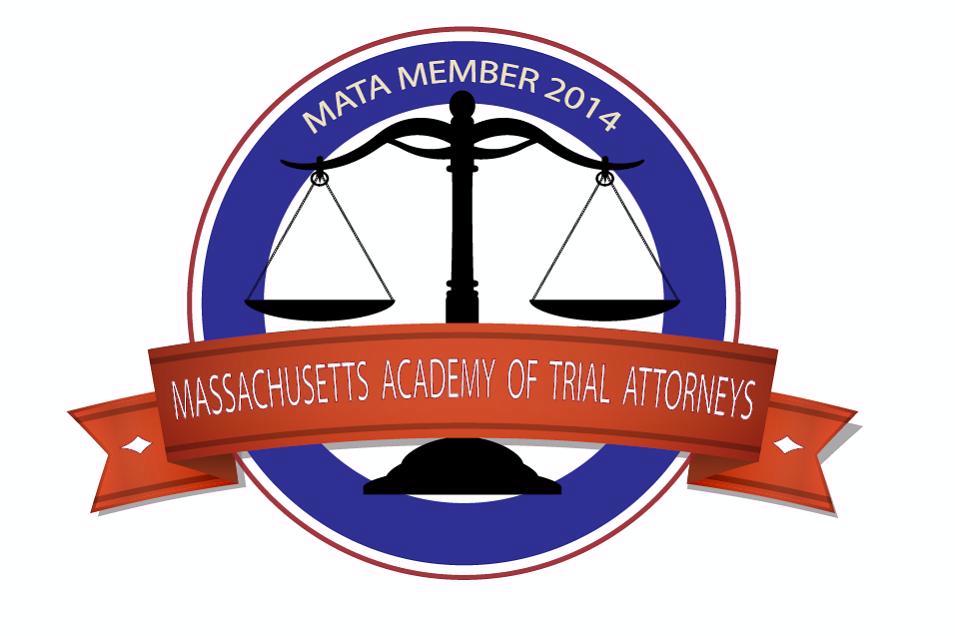Brattleboro (/'bræt?l?b?ro?/, originally Brattleborough, is a town in Windham County, Vermont, United States, located in the southeast corner of the state, along the state line with New Hampshire. The population was 12,049 at the 2010 census. It is the most populous municipality along Vermont's eastern border, the fourth largest town in the state (trailing Essex, Colchester, and Bennington), and the seventh largest municipality in Vermont overall when the cities of Burlington, South Burlington and Rutland are included. Brattleboro is situated on the west bank of the Connecticut River at the point where Vermont's West River flows into it.
Noted for its vibrant and diverse arts community, the town is also home to the Brattleboro Retreat (a mental health and addictions hospital), two graduate schools; Marlboro College Center for Graduate and Professional Studies, and the SIT Graduate Institute (an international educational institution), plus satellite campuses of three colleges; the Community College of Vermont, Vermont Technical College, and Union Institute and University.

History
Abenaki land
Because Native Americans in the region tended to name places and regions after their rivers or watersheds, the site of today's Brattleboro, the confluence of the West River and the Connecticut River, was called 'Wantastiquet' by the Abenaki people, a name meaning, according to various translations, "lost river", "river that leads to the west", or "river of the lonely way". Today known only by its English-transliterated name, the West River remains demarcated by New Hampshire's towering Mount Wantastiquet, directly opposite its mouth, and Lake Wantastiquet, near where it rises at its source. The Abenaki would transit this area annually between Missisquoi (their summer hunting grounds near the current-day town of Swanton) in northwestern Vermont, and Squakheag (their winter settlement or camps) near what is now Northfield, Massachusetts. The specific Abenaki band who lived here and traversed this place were called Sokoki, meaning "people who go their own way" or "people of the lonely way". The Abenaki's inclusive name for what is now Vermont was "Ndakinna" ("our land"), and in the 17th and 18th centuries, as more Europeans moved into the region, their often vigorous measures of self-defense culminated in Dummer's War (also known variously as Greylock's War, Three Years War, Lovewell's War, the 4th Indian War, and in Maine as Father Rasle's War). Most Abenaki allied with the French during this period, and following what is now known as the French and Indian War (1754-1763), they were largely driven north or fled into Quebec, further opening the way for English - and later United States - settlements in the area.
Frontier fort
To defend the Massachusetts Bay Colony against Chief Gray Lock and others during Dummer's War, the Massachusetts General Court voted on December 27, 1723 to build a blockhouse and stockade on the Connecticut River near the site of what would later become known as Brattleboro. Lieutenant-governor William Dummer signed the measure, and construction of Fort Dummer began on February 3, 1724. It was completed before summer. On October 11 of that year, the French attacked the fort and killed some soldiers. In 1725, Dummer's War ended.
By 1728, and in subsequent peaceful periods, the fort served as a trading post for commerce among the colonial settlers and the Indians. But violence flared up from time to time throughout the first half of the 18th century. In 1744, what became known as King George's War broke out, lasting until 1748. During this period a small body of British colonial troops were posted at the fort, but after 1750 this was considered unnecessary.
Although the area was originally part of the Equivalent Lands, the township became one of the New Hampshire grants, and was chartered (founded) as such on December 26, 1753, by Governor Benning Wentworth. It was named Brattleborough, after Colonel William Brattle, Jr. of Boston, a principal proprietor. Still, settlement activities remained tentative until after the 1763 Treaty of Paris, when France abandoned their claims to Vermont, part of the region which they had called New France.
Hostilities having ceased, Brattleboro developed quickly in peacetime, and soon was second to none in the state for business and wealth. In 1771, Stephen Greenleaf opened Vermont's first store in the east village, and in 1784, a post office was established. A bridge was built across the Connecticut River to Hinsdale, New Hampshire in 1804. In 1834, the Brattleboro Retreat, then called the Vermont Asylum for the Insane, was founded by the generous bequest of Hinsdale, NH's Anna Marsh. In 1844 the Brattleboro Hydropathic Establishment was opened by Dr. Robert Wesselhoeft; this was the third 'water cure' establishment in the country, utilizing waters from a spring near the current downtown fire station. Until the "Water Cure" closed in 1871, the town was widely known as a curative health resort.
Mill town
Whetstone Falls, very close to where Brattleboro's Whetstone Brook flows into the Connecticut River, was a handy source of water power for watermills, initially a sawmill and a gristmill. By 1859, when the population had reached 3,816, Brattleboro had a woolen textile mill, a paper mill, a manufacturer of papermaking machinery, a factory making melodeons, two machine shops, a flour mill, a carriage factory, and four printing establishments. Connected by the Vermont & Massachusetts Railroad and the Vermont Valley Railroad, the town prospered as a regional center for trade in commodities including grain, lumber, turpentine, tallow and pork. In 1888, the spelling of the town's name was shortened to Brattleboro.
Renowned author Rudyard Kipling married a young Brattleboro woman, Carrie Balestier, in 1892, and the couple settled here, Kipling writing 'The Jungle Book' and other works and building a home, called 'Naulakha', just over the town line to the north in neighboring Dummerston. Kipling also wrote about local life in the early 1890s: heavy snowfalls, ox-teams drawing sledges, and people in the small towns beset with what he called a "terrifying intimacy" about each other's lives. He recorded the dearth of men who had left, going to seek their fortunes in the cities or out west, and the consequent loneliness and depression in the lives of local women; the long length of the workday for farmers, even in winter, often for lack of help; and the abandonment of farms.
The first person ever to receive a Social Security benefit check, issued on January 31, 1940 was Ida May Fuller from Brattleboro.
Social Security Office Attleboro Ma Video
Geography
Brattleboro is situated at 42°51?15?N 72°33?31?W. Due to its location in the southernmost part of Vermont, the town is actually geographically closer to the other regional state capitals of Albany, Hartford, Boston, and Concord than it is to its own state capital of Montpelier.
According to the United States Census Bureau, the town has a total area of 32.5 square miles (84.0 km2), of which 32.0 square miles (82.9 km2) is land and 0.5 square mile (1.2 km2, 1.42%) is water. Brattleboro is drained by the West River, Ames Hill Brook and Whetstone Brook. The town is in the Connecticut River Valley, and its eastern boundary (and the Vermont state line) is the western bank of the Connecticut River. Hills and mountains surround the town.

Economy
Both a commercial and touristic gateway for the state of Vermont, Brattleboro is the first major town one encounters crossing northward by automobile from Massachusetts on Interstate 91, and is accessed via Vermont exits 1, 2, and 3 from that thoroughfare. It offers a mix of a rural atmosphere and urban amenities, including a large number of lodging establishments. Brattleboro also hosts many art galleries, stores, and performance spaces, most of them located in the downtown area.
In 2007, after meeting certain qualifying criteria, Brattleboro's Selectboard passed a resolution designating itself a Fair Trade Town, becoming the second Fair Trade certified town in the nation after Media, Pennsylvania.
C&S Wholesale Grocers, the northeast's largest regional food distributor, made its headquarters here until 2005, when they moved their administrative offices to Keene, New Hampshire; however, because of close proximity to Interstate 91, C&S still operates a large shipping and warehouse facility there, near Exit 3.
Development
The town's densely populated center is located near Vermont's lowest elevation point in the Connecticut river valley. Because of the surrounding steep hills there is very little flat land, and many of its buildings and houses are situated on steep hillsides, necessarily closely bunched together. This concentrated topography and population density have helped to create a semi-urban, cosmopolitan atmosphere in the downtown.
Since the 1950s, additional construction and development have expanded outside the concentrated downtown area; in the west, south, and north of the township. The southeast quarter of the town, near to and abutting the riverbank, is where its population has historically been the densest, and is composed largely of one- or two-family houses, with apartment buildings such as "triple deckers" interspersed among them. Commercial and industrial operations are concentrated on the Canal Street artery that cuts through the area. The town's high school and the Regional Career Center are also located in this section, as is Fort Dummer State Park, which is named after the first European settlers' 1724 stockade. The original Fort's site, however, was flooded in the early 20th century by a flood-control and hydro-electric dam built just downstream in Vernon, VT. An historical marker is near the Fort's now-underwater site near the west bank of the Connecticut River; the plaque is located on Vernon Road (VT Route 142) at the corner of Cotton Mill Hill.
The western section of town, built up around VT's east-west Route 9, was formally designated a village in 2005. It is mostly lower-density residential in character, and features the state's largest mobile home park and several planned housing developments and subdivisions. Away from the Route 9 conduit, other parts of western Brattleboro and some areas north of the West River have a decidedly rural character, with dirt roads, sparse housing, wooded Green Mountains foothills, and the last few farms left in the town following the 1970s' decline of the dairy industry. At its peak, the immediate Brattleboro area had over 170 farms; there are now less than a dozen remaining.
The section of Brattleboro north of the West River, formerly farmland, was mostly subdivided and developed during the 1960s and 1970s following the construction of Interstate 91, which runs north-south through the town. The area has little residential development and is dominated by larger commercial and industrial establishments and suburban-style shopping areas along Putney Road, including seven chain hotels and motels located within a short distance of each other.
Brattleboro is also the headquarters of the Holstein/Friesian Cattle Association, which houses and maintains the worldwide registry for these two cattle breeds.

Climate
Brattleboro experiences a humid continental climate (Köppen Dfa) with cold, snowy winters and hot, humid summers. The town can experience snowfall as early as November and as late as April, and in the adjacent mountains and high country as late as May. Nor'easters often come with the potential of dumping a foot or more of snow on Brattleboro when they move through; such storms are not uncommon during the winter months. Summers are warm to hot and generally humid, with abundant sunshine and heavy showers and thunderstorms associated with passing cold fronts. Tornadoes are rare.
The record high is 100 °F (38 °C), set in 1955, and the record low is -33 °F (-36 °C), set in 1958. In terms of average annual precipitation, May is typically the wettest month, and February is the driest. Brattleboro averages 92.58 inches (235 cm) of snow annually.
Brattleboro lies in USDA plant hardiness zone 5a.

Demographics
As of the census of 2000, there were 12,005 people, 5,364 households, and 2,880 families residing in the town. Almost all of the population is concentrated in two census-designated places identified in the town: Brattleboro and West Brattleboro. The results of the 2010 census indicate very little change in the overall number of people living in the Town. Despite this, Brattleboro remains the most populous town along Vermont's eastern border.
The population density of the town was 375.3 people per square mile (144.9/km2). There were 5,686 housing units at an average density of 177.7 per square mile (68.6/km2). The racial makeup of the town was 94.06% White, 1.13% Black or African American, 0.26% Native American, 1.67% Asian, 0.04% Pacific Islander, 0.55% from other races, and 2.28% from two or more races. Hispanic or Latino of any race were 1.67% of the population.
There were 5,364 households out of which 27.2% had children under the age of 18 living with them, 37.8% were married couples living together, 12.8% had a female householder with no husband present, and 46.3% were non-families. 37.8% of all households were made up of individuals and 13.3% had someone living alone who was 65 years of age or older. The average household size was 2.15 and the average family size was 2.84.
In the town the population was spread out with 22.3% under the age of 18, 6.6% from 18 to 24, 29.2% from 25 to 44, 25.3% from 45 to 64, and 16.6% who were 65 years of age or older. The median age was 40 years. For every 100 females there were 84.0 males. For every 100 females age 18 and over, there were 79.9 males.
The median income for a household in the town was $31,997, and the median income for a family was $44,267. Males had a median income of $31,001 versus $25,329 for females. The per capita income for the town was $19,554. About 9.2% of families and 13.1% of the population were below the poverty line, including 18.0% of those under age 18 and 9.2% of those age 65 or over.

Government
Brattleboro employs a Representative Town Meeting local government, wherein its citizens are represented at-large by a Select Board of five members, and by several dozen Town Representatives elected from three municipal districts. The Select Board, meeting on average every week or two, is considered part of the 'executive branch' of town government; its five members being elected to fill three one-year positions and two three-year positions. In turn, the Select Board hires and supervises a full-time Town Manager. The town's three districts also each elect a representative to the Vermont State Legislature.

Education
Brattleboro has a diverse mix of public and private primary, secondary and post-secondary schools and career centers. Downtown, Marlboro College, whose undergraduate campus is in the adjacent town of Marlboro, VT, operates a large and modern Graduate Center building. The Community College of Vermont and Vermont Technical College also have campuses in Brattleboro; as of the 2014 fall semester, they are located in the downtown's newly renovated Brooks House. Brattleboro is also home to the New England Academic Center of Union Institute and University, housed in the Marlboro College Graduate Center building.
SIT Graduate Institute, formerly known as World Learning / the School for International Training, is a private graduate institute in northern Brattleboro. An outgrowth of the Experiment in International Living, which was founded in 1932 and originally based in nearby Putney, VT, the Institute offers Masters degrees in five internationally oriented concentrations. Coming from all global regions, its students and faculty help give Brattleboro a decidedly eclectic and multi-cultural atmosphere.
Brattleboro currently has three public K-12 elementary schools. They are:
- Green Street School
- Canal Street/Oak Grove School
- Academy School
There is one public middle school, the Brattleboro Area Middle School (BAMS), and one public high school, the Brattleboro Union High School (BUHS). The Windham Southeast Supervisory Union, which oversees the public school system in the southeastern corner of Windham County, also administers a dedicated vocational education unit, the Windham Regional Career Center.

Parks and recreation
The town operates and maintains the Gibson-Aiken Center, a large recreation and community activities facility, located downtown on Main Street, along with a number of parks and outdoor recreation centers, including Living Memorial Park, whose features include an outdoor swimming pool and a municipal skiing facility. There are bicycle lanes on Putney Road in the northern portion of town and on a short segment of Western Avenue in West Brattleboro. Open during the summer months, Fort Dummer State Park is named for, and located near, the original site of a Dummer's War-era stockade. The state park consists of 218 acres of protected forest, featuring hiking trails and a State campground, just south of the population center on wooded hills overlooking the Connecticut River.
Brattleboro sees a substantial seasonal influx of recreational skiers and snowboarders, many of them bound for the resorts at nearby Mount Snow and Stratton, but it is also a winter sports destination in and of itself. The town played an important role in the development and popularization of the skiing industry as a winter sport, with pioneering Brattleboro native and Dartmouth College alumnus Fred Harris, founder of the Dartmouth Outing Club (1909-10), also establishing the Brattleboro Outing Club (in 1922), contributing to the first North American use of motor-driven ski lifts, and building the Harris Hill olympic-scale ski jumping facility, the site of international competitions every February that still attract daring ski-jumping athletes from all over the world.

Transportation
Roads and highways
Brattleboro is crossed by six highways, including one Interstate freeway. They are:
- Interstate 91
- U.S. Route 5 ("Connecticut River Byway")
- Vermont Route 9 ("Molly Stark Trail")
- Vermont Route 30
- Vermont Route 119
- Vermont Route 142
Vermont Route 9 runs from the New York border with Vermont, west of Bennington, traverses the southern backbone of the Green Mountains well west of Brattleboro, and eventually arrives in the heart of Brattleboro's downtown as High Street. Its other local names are The Molly Stark Trail, Marlboro Road, Western Avenue, Main Street, and Putney Road. It merges with U.S. Route 5 at the intersection of Main and High Streets, then runs north with Main Street into Putney Road then to the roundabout at Interstate 91's Exit 3, where it diverges from Route 5 and runs eastward into New Hampshire, becoming New Hampshire Route 9.
U.S. Route 5 enters Brattleboro at its border with the town of Guilford and runs north-south, through downtown, eventually exiting Brattleboro at its northern border with the town of Dummerston. Route 5's local names are Canal Street, Main Street, and Putney Road. Southbound, Route 5 detours along Park Place and part of Linden Street, as part of a one-way 'traffic triangle' at the north end of Main Street. Route 5, designated throughout Vermont as the Connecticut River Byway, is the only scenic byway in Vermont to receive national byway status.
Scenic Vermont Route 30 has its southern terminus in Brattleboro at the intersection of Park Place and Linden Street. From this point, it runs for about 12 miles on a very gently graded roadbed along the West River's southern bank, affording a stunning vista and connecting Brattleboro with picturesque New England towns and recreational areas elsewhere in Windham County and Vermont, its wide riverside paved shoulder making it a favorite with cyclists. Route 30 exits Brattleboro at its border with Dummerston, and continues northwest along the West River. Its local names within Brattleboro are Linden Street and West River Road.
Interstate 91, originating in Connecticut and terminating at the Canadian border, runs north-south through town arcing westward around the town center. Its first three Vermont exits are in Brattleboro: Exit 1 serves the southern part of town, Exit 2 serves the western section of town connecting to local ski areas via Route 9, and Exit 3 serves the northern section of town and neighboring southwest New Hampshire. I-91's majestic twin-structure West River Bridge is, as of 2015, being rebuilt with a completely new design.
Vermont Route 119 begins at a 5-way intersection locally known as "Malfunction Junction" with US Route 5 and VT Route 142. Route 119's local name within Brattleboro is Bridge Street. It continues east with an at-grade crossing of the New England Central Railroad just before crossing into New Hampshire over the Connecticut River, whose border lies just 0.08 miles (0.13 km) from the road's western end.
Vermont Route 142 begins at Malfunction Junction (mentioned above), continuing southward, closely paralleling the New England Central Railroad for much of its length within town. Its local names are Vernon Street and Vernon Road, as it continues southward into the town of Vernon and eventually into Massachusetts.
Rail
Amtrak, the national passenger rail system, operates its Vermonter service daily through Brattleboro, connecting the town by rail with Washington, D.C. and St. Albans, Vermont and many stations in between. Brattleboro was recently part of a $70 million re-alignment of the Vermonter's route to the old Montrealer route, restoring passenger rail service between Brattleboro and the western Massachusetts cities of Northampton and Greenfield. Upgrades to railroad tracks in Massachusetts and Connecticut, to the south, are expected to significantly reduce rail travel time to New York and points south by 2017.
Bus
Connecticut River Transit (CRT), whose bus service is known as the Current, operates what was formerly known as Brattleboro's 'BeeLine' bus service Monday through Saturday between the hours of 6:00 am and 6:30 pm, on their Red, Blue, and White Lines. These three lines conjoin to move residents throughout the basically T-shaped street map topography of the town, as well as to the town of Hinsdale, New Hampshire to the east. The "Current" also provides a weekday commuter bus line between Brattleboro and Bellows Falls. The Deerfield Valley Transit Association's (DVTA) fare-free "MOOver" bus operates daily between Brattleboro and the town of Wilmington as well.
In late 2014, Connecticut River Transit announced a pending merger with the Deerfield Valley Transit Association, which both organizations expected to finalize by July 2015. The resulting entity became known as Southeast Vermont Transit on July 1, 2015, but the existing fare schedule and bus fleet with original paint schemes all remain intact. Like the original two organizations, Southeast Vermont Transit is a non-profit organization.
Complementing the local bus service detailed above, Greyhound, the national commercial bus service, maintains a route between White River Junction and New York City with a northbound and southbound stop in Brattleboro, at a service station on Canal Street near Interstate 91's Exit 1. In the spring of 2014, Greyhound announced the re-commencement of regular bus service from Brattleboro to Boston with stops in Keene and Nashua, New Hampshire.
Air
The closest small-craft airports to Brattleboro are the Deerfield Valley Regional Airport in West Dover to the west, and Dillant-Hopkins Airport in Keene, New Hampshire to the east. The closest airports (both within 70 miles (110 km) north of the town) offering commercial domestic flights include Lebanon Municipal Airport in West Lebanon, New Hampshire and Rutland - Southern Vermont Regional Airport, close to Rutland, with daily flights to and from Boston at each and White Plains, New York from Lebanon Municipal Airport, provided by Cape Air at both airports. The closest major airports to Brattleboro with domestic and international flights include Bradley International Airport to the south, Manchester-Boston Regional Airport to the east and Albany International Airport to the west, all three within a two-hour drive from the Town.
Culture
Print media
The town is home to the Brattleboro Reformer (est. 1876 as the 'Windham County Democrat'), a daily newspaper with a circulation of just over 7800, and The Commons (est. 2006), a non-profit community weekly newspaper with a distribution of about 8,800. The Parent Express, a community newspaper, circulates in Brattleboro; Keene, New Hampshire; and throughout Windham County, Vermont and Cheshire County, New Hampshire.
Radio
There are several radio stations which broadcast from Brattleboro.
- WVBA 88.9 FM, Vermont Public Radio outlet
- WKVT-FM 92.7
- WRSI 101.5 (repeater station at Marlboro, Vermont of station broadcasting from Deerfield, Massachusetts on 93.9, with studios in Northampton, Massachusetts).
- WTSA-FM 96.7.
- WVEW-LP 107.7 (community-supported low power station).
- WKVT 1490.
- WTSA 1450.
Television
Due to the surrounding mountains, Brattleboro is not reached by broadcast television. However, it is considered part of the Boston television market. Comcast is the major supplier of cable television programming for Brattleboro. Local stations offered on Comcast include most major Boston-area stations, as well as WMUR-TV (ABC) and WEKW-TV (NHPTV) from New Hampshire; WCAX-TV (CBS), WNNE (NBC) and WVTA (Vermont PBS) from the Burlington / Plattsburgh market; WCDC (ABC) from Adams, Massachusetts (in the Albany NY market); and WGBY-TV from Springfield, Massachusetts.
Arts and events
Brattleboro has a thriving arts community. It was listed recently in John Villani's book The 100 Best Small Art Towns in America, in which it was ranked #9 among 'arts towns' with a population of 30,000 or under.
On the first Friday of every month, an event known as Gallery Walk is held, in which galleries, artists, and arts organizations open their doors to the public to display new work or hold performances. Included in the organizations that participate are the Brattleboro Museum and Art Center, the Hooker-Dunham Theater and Gallery, the In-Sight Photography Project, River Gallery School, Through the Music, and the Windham Art Gallery.
Other notable arts organizations in Brattleboro include the Brattleboro Music Center, the Vermont Theatre Company, the New England Youth Theater, the Brattleboro Women's Chorus, the New England Center for Circus Arts (NECCA) the Vermont Performance Lab and the Vermont Jazz Center.
Annual events in Brattleboro include:
- The Winter Carnival in February.
- Harris Hill ski-jumping competition in February.
- Women's Film Festival in March
- Maple Open House Weekend in March.
- River Gallery School benefit auction in March.
- Taste of the Town in May.
- Slow Living Summit, late May or early June, just prior to Strolling of the Heifers weekend
- The Strolling of the Heifers parade and festival, the first full weekend in June.
- Vermont Theatre Company's Shakespeare-in-the-Park in June and July.
- Brattleboro Free Folk Festival, begun in 2003.
- Brattleboro Literary Festival in October.
- Brattleboro Film Festival first two weeks of November www.brattleborofilmfestival.org
Sites of interest
- Brattleboro VT Living
- Brattleboro Film Festival (first weeks of November)
- Brattleboro Women's Film Festival (first weeks of March)
- Brattleboro Historical Society & Museum
- Brattleboro Museum and Art Center
- Fort Dummer State Park
- Hooker-Dunham Theater & Gallery
- New England Center for Circus Arts (NECCA)
- New England Youth Theatre
- Slow Living Summit
- Strolling of the Heifers
- Vermont Theatre Company
- Brattleboro Literary Festival
Infrastructure
Health care
- Brattleboro is home to the Brattleboro Memorial Hospital, a 61-bed community hospital serving southeastern Vermont since 1904. As of 2014, the hospital has 137 primary care and specialist physicians on its staff.
- Brattleboro is also home to the Brattleboro Retreat, a large private, non-profit psychiatric hospital founded by a generous bequest from Hinsdale, NH's Anna Hunt Marsh in 1834. The Retreat, as it is known locally, sits on a 1,000 acre parcel of land overlooking the southern bank of the West River, with its main entrance just north of the downtown on Linden Street (VT Route 30). It was one of the first acute mental health care facilities founded in the United States, and is considered a pioneer in the field. It is the third largest employer in the town, and 45th largest in Vermont, with a workforce of about 400 as of 2013.
- Health Care & Rehabilitation Services of Vermont (HCRS) provides Brattleboro, and the rest of Windham and Windsor Counties, with outpatient services for mental health, substance abuse and developmental disabilities. The agency is headquartered in Springfield and also has other satellite offices in Bellows Falls and White River Junction.
Utilities
Brattleboro's electricity is supplied by Green Mountain Power. Brattleboro's surface water supply is the Pleasant Valley Reservoir, which the Pleasant Valley Water Plant siphons through Brattleboro at a daily average of 1.0 to 1.5 gallons per day. Also, backup water pumps are adjacent to West River Road just north of the Brattleboro Retreat.
Cable television in Brattleboro is provided by Comcast. Comcast and FairPoint Communications also provide the town with landline phone and high speed Internet service.
Law enforcement
The Brattleboro Police Department is the principal law enforcement agency for the town, as well as West Brattleboro. The current Chief of Police is Michael Fitzgerald.
The Windham County Sheriff's Department provides prisoner transport and serves civil documents, such as subpoenas, across Brattleboro and the rest of Windham County. The current Sheriff is Keith Clark.
The Vermont State Police have a substation in West Brattleboro on Marlboro Avenue and also serve the town.
Notable people
Brattleboro is notable for having been home to two Nobel Laureates in Literature: Rudyard Kipling (awarded 1907) and Saul Bellow (awarded 1976)
In popular culture
- Brattleboro is the setting for much of H. P. Lovecraft's story The Whisperer in Darkness.
- Brattleboro is the birthplace and burial site of William Morris Hunt, noted and influential 19th-century American painter.
- Brattleboro is mentioned repeatedly in David Foster Wallace's novel Infinite Jest.
- Brattleboro is the setting of multiple stories in Jacob M. Appel's collection Scouting for the Reaper.
- The popular Joe Gunther mystery series written by Archer Mayor is largely set in Brattleboro.
- Brattleboro is where the title character in Tom Taylor's play Our American Cousin meets his English relatives, leading to his trip to England where the events of the play take place.
- In the comedy movie Super Troopers, Lieutenant Arcot "Thorny" Ramathorn suggests that Brattleboro would be a good town to move to since his station is going to be shut down.
- The psychiatric hospital in the 2011 action movie Sucker Punch is located in Brattleboro.
- Brattleboro voted in support of a measure calling on the town's police force to arrest and indict President George W. Bush and Vice President Dick Cheney in March 2008. The vote was 2012-1795.
- Brattleboro placed 11th on "The 20 Best Small Towns in America of 2012" list by Smithsonian Magazine in May 2012.
Are You Looking for Products
Here some products related to "Brattleboro, Vermont".
* amzn.to is official short URL for Amazon.com, provided by Bitly
Get these at Amazon.com
Source of the article : here



EmoticonEmoticon